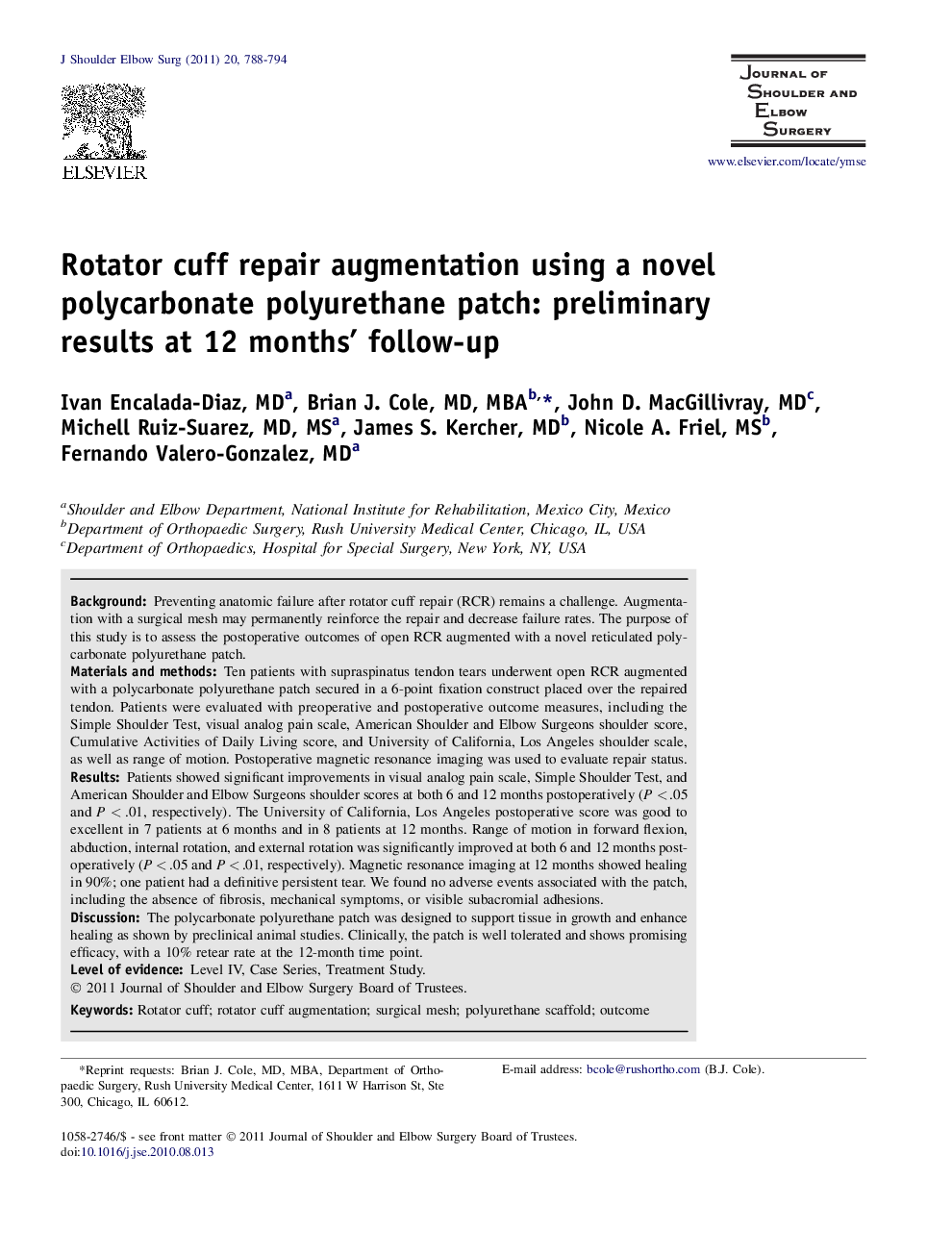| Article ID | Journal | Published Year | Pages | File Type |
|---|---|---|---|---|
| 4074775 | Journal of Shoulder and Elbow Surgery | 2011 | 7 Pages |
BackgroundPreventing anatomic failure after rotator cuff repair (RCR) remains a challenge. Augmentation with a surgical mesh may permanently reinforce the repair and decrease failure rates. The purpose of this study is to assess the postoperative outcomes of open RCR augmented with a novel reticulated polycarbonate polyurethane patch.Materials and methodsTen patients with supraspinatus tendon tears underwent open RCR augmented with a polycarbonate polyurethane patch secured in a 6-point fixation construct placed over the repaired tendon. Patients were evaluated with preoperative and postoperative outcome measures, including the Simple Shoulder Test, visual analog pain scale, American Shoulder and Elbow Surgeons shoulder score, Cumulative Activities of Daily Living score, and University of California, Los Angeles shoulder scale, as well as range of motion. Postoperative magnetic resonance imaging was used to evaluate repair status.ResultsPatients showed significant improvements in visual analog pain scale, Simple Shoulder Test, and American Shoulder and Elbow Surgeons shoulder scores at both 6 and 12 months postoperatively (P < .05 and P < .01, respectively). The University of California, Los Angeles postoperative score was good to excellent in 7 patients at 6 months and in 8 patients at 12 months. Range of motion in forward flexion, abduction, internal rotation, and external rotation was significantly improved at both 6 and 12 months postoperatively (P < .05 and P < .01, respectively). Magnetic resonance imaging at 12 months showed healing in 90%; one patient had a definitive persistent tear. We found no adverse events associated with the patch, including the absence of fibrosis, mechanical symptoms, or visible subacromial adhesions.DiscussionThe polycarbonate polyurethane patch was designed to support tissue in growth and enhance healing as shown by preclinical animal studies. Clinically, the patch is well tolerated and shows promising efficacy, with a 10% retear rate at the 12-month time point.
